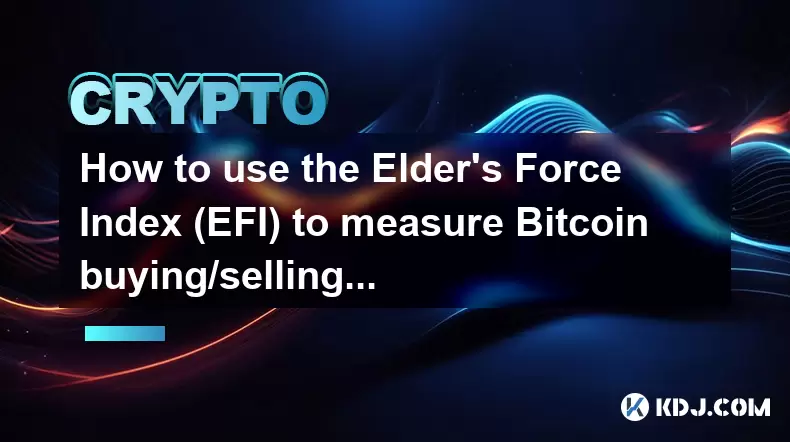-
 Bitcoin
Bitcoin $108,980.7358
0.74% -
 Ethereum
Ethereum $2,571.0926
1.93% -
 Tether USDt
Tether USDt $1.0002
-0.02% -
 XRP
XRP $2.2667
1.60% -
 BNB
BNB $661.7100
0.93% -
 Solana
Solana $151.4189
2.27% -
 USDC
USDC $1.0000
-0.01% -
 TRON
TRON $0.2878
1.42% -
 Dogecoin
Dogecoin $0.1739
6.04% -
 Cardano
Cardano $0.5858
1.83% -
 Hyperliquid
Hyperliquid $39.9185
2.35% -
 Sui
Sui $2.9139
0.69% -
 Bitcoin Cash
Bitcoin Cash $497.2075
2.19% -
 Chainlink
Chainlink $13.6101
2.97% -
 UNUS SED LEO
UNUS SED LEO $9.0469
0.30% -
 Stellar
Stellar $0.2510
5.54% -
 Avalanche
Avalanche $18.2271
1.85% -
 Toncoin
Toncoin $2.8336
3.53% -
 Shiba Inu
Shiba Inu $0.0...01179
3.07% -
 Hedera
Hedera $0.1595
4.34% -
 Litecoin
Litecoin $87.7262
0.69% -
 Monero
Monero $320.3380
1.76% -
 Polkadot
Polkadot $3.4007
1.84% -
 Dai
Dai $1.0000
-0.01% -
 Ethena USDe
Ethena USDe $1.0000
-0.04% -
 Bitget Token
Bitget Token $4.4321
1.03% -
 Uniswap
Uniswap $7.4250
1.33% -
 Aave
Aave $286.5818
5.00% -
 Pepe
Pepe $0.0...01014
5.26% -
 Pi
Pi $0.4652
3.86%
What is the "holy grail" combination of indicators for Bitcoin?
Traders seek the "holy grail" of Bitcoin indicators—combinations like RSI+Bollinger Bands or MACD+Moving Averages—to predict price moves, minimize risk, and boost profits.
Jul 07, 2025 at 09:21 am

Understanding the Concept of the "Holy Grail" in Trading
In the realm of cryptocurrency trading, particularly with Bitcoin, traders often refer to a “holy grail” combination of indicators as a set of technical tools that can consistently predict market movements and generate profitable trades. This concept is not unique to Bitcoin but has gained significant traction due to the volatile nature of the crypto markets. The “holy grail” implies a near-perfect strategy that minimizes risk while maximizing returns. Traders spend years experimenting with various combinations of indicators in search of this elusive setup.
Important Note: No single indicator or combination guarantees 100% accuracy, but some setups are considered more reliable than others.
The Role of Technical Indicators in Bitcoin Trading
Technical indicators serve as visual guides on price charts, helping traders identify trends, reversals, momentum, and potential entry or exit points. In Bitcoin trading, where volatility can create rapid price swings, using the right indicators becomes crucial. Some traders combine multiple indicators to confirm signals and filter out false ones. The goal is to find a balance between sensitivity and reliability.
- Moving Averages (MA) help smooth out price data to form a trend-following indicator.
- Relative Strength Index (RSI) measures the speed and change of price movements to detect overbought or oversold conditions.
- Bollinger Bands provide insight into price volatility and potential breakout levels.
- MACD (Moving Average Convergence Divergence) identifies changes in the strength, direction, momentum, and duration of a trend.
Popular Indicator Combinations Among Bitcoin Traders
Many seasoned Bitcoin traders have shared their preferred setups based on backtesting and live trading experiences. While no two traders may agree entirely, some combinations are widely respected within the community. These include:
- RSI + Bollinger Bands: RSI helps identify overbought or oversold levels, while Bollinger Bands show volatility contraction and expansion.
- MACD + Moving Averages: MACD confirms trend changes, and moving averages provide support/resistance levels.
- Volume Profile + Order Blocks: These tools help understand institutional-level activity and key price zones.
Each combination serves a specific purpose, and understanding how they interact is key to developing a robust trading strategy.
How to Backtest Your Indicator Combination
Backtesting is an essential step before deploying any indicator combination in live trading. It involves applying your chosen indicators to historical Bitcoin price data to assess how well they would have performed in the past. Here's how you can effectively backtest:
- Choose a Reliable Platform: Platforms like TradingView, MetaTrader, or specialized crypto platforms offer backtesting features.
- Select Historical Data: Use at least 2–3 years of Bitcoin price data for comprehensive results.
- Apply Indicators: Add your selected indicators to the chart and adjust settings based on typical market behavior.
- Simulate Trades: Manually or automatically execute trades based on indicator signals and track performance metrics like win rate, profit factor, and drawdown.
This process allows traders to refine their strategies and eliminate underperforming components.
Common Pitfalls When Using Indicator Combinations
Despite their usefulness, relying too heavily on technical indicators can lead to common mistakes. Many traders fall into the trap of over-optimizing or overloading charts with too many indicators. Here are some pitfalls to avoid:
- Indicator Overload: Using too many indicators leads to confusion and conflicting signals.
- Ignoring Market Context: Indicators work best when aligned with broader market sentiment and news events.
- Failing to Adapt: Markets evolve, and what worked yesterday might not work today. Regularly review and update your strategy.
- Neglecting Risk Management: Even the best indicator combination can fail without proper position sizing and stop-loss placement.
Avoiding these errors can significantly improve the effectiveness of any trading system.
Frequently Asked Questions (FAQs)
Q: Can I use the same indicator combination across all timeframes?
A: No, different timeframes require different approaches. Shorter timeframes like 5-minute or 15-minute charts often need faster-reacting indicators, while daily or weekly charts benefit from slower, more stable indicators.
Q: Is it possible to automate a holy grail indicator strategy?
A: Yes, many traders develop bots or scripts to automate trades based on indicator signals. However, automation requires rigorous testing and continuous monitoring.
Q: Are there any free tools to test indicator combinations for Bitcoin?
A: Yes, platforms like TradingView, Binance’s native tools, and open-source platforms such as Python-based libraries (e.g., TA-Lib) allow users to experiment with indicators at no cost.
Q: How important is psychology when using technical indicators?
A: Very important. Discipline, patience, and emotional control play a major role in sticking to a strategy, especially during periods of high volatility or drawdown.
Disclaimer:info@kdj.com
The information provided is not trading advice. kdj.com does not assume any responsibility for any investments made based on the information provided in this article. Cryptocurrencies are highly volatile and it is highly recommended that you invest with caution after thorough research!
If you believe that the content used on this website infringes your copyright, please contact us immediately (info@kdj.com) and we will delete it promptly.
- Drake, Bitcoin, and Mainstream Music: A New Era?
- 2025-07-07 12:30:12
- Meme Coins, ROI Potential, 2025 Selection: What's Hot and What's Not?
- 2025-07-07 12:30:12
- Bitcoin, Ethereum, and Dogecoin: Navigating the Crypto Landscape in a Wild Week
- 2025-07-07 12:50:11
- Meme Coin Mania: Explosive Picks and Top Buys in 2025
- 2025-07-07 12:50:11
- Bitcoin, Ethereum, and the Cryptocurrency Market: Riding the Wave of Innovation
- 2025-07-07 12:55:12
- Elon Musk, Bitcoin, and Crypto News: A 2025 Perspective
- 2025-07-07 13:10:12
Related knowledge

How to identify a volatility contraction pattern on Bitcoin using indicators?
Jul 07,2025 at 07:28am
What is a Volatility Contraction Pattern in Bitcoin Trading?A volatility contraction pattern refers to a phase where the price movement of an asset, such as Bitcoin, becomes increasingly narrow over time. This typically signals that the market is consolidating and may be preparing for a breakout or breakdown. In simpler terms, when volatility contracts,...

What is the Woodies CCI indicator and can it be used for Bitcoin?
Jul 04,2025 at 05:14pm
Understanding the Woodies CCI IndicatorThe Woodies CCI indicator is a variation of the traditional Commodity Channel Index (CCI), which was originally developed by Donald Lambert. The standard CCI measures the current price level relative to an average price over a given period, typically 14. However, the Woodies version modifies this calculation to mak...

How to use indicators to trade the opening range breakout for Bitcoin CME futures?
Jul 05,2025 at 07:35pm
What Is the Opening Range Breakout Strategy?The opening range breakout (ORB) strategy is a popular trading technique used in both traditional markets and cryptocurrency futures, particularly for Bitcoin on the CME. This method involves identifying a specific price range formed during the early phase of a trading session and then taking positions when th...

How to use the Relative Vigor Index (RVI) for Bitcoin trading?
Jul 07,2025 at 02:00pm
Understanding the Relative Vigor Index (RVI)The Relative Vigor Index (RVI) is a technical analysis tool used to assess the strength of price movements in financial markets, including cryptocurrencies like Bitcoin. It operates under the assumption that prices tend to close higher in an uptrend and lower in a downtrend. The RVI compares the closing price ...

What does a bearish cross on the Stochastic RSI mean for Bitcoin?
Jul 05,2025 at 07:18pm
Understanding the Stochastic RSI IndicatorThe Stochastic RSI (Relative Strength Index) is a momentum oscillator used in technical analysis to identify overbought or oversold conditions in an asset's price. It combines two well-known indicators — the RSI and the Stochastic Oscillator — to provide more nuanced signals than either could alone. The Stochast...

How to use the Elder's Force Index (EFI) to measure Bitcoin buying/selling pressure?
Jul 07,2025 at 02:50am
What is the Elder's Force Index (EFI)?The Elder's Force Index (EFI) is a technical indicator developed by Dr. Alexander Elder to measure the power behind price movements in financial markets. It combines both price change and volume to assess buying or selling pressure over a specific period. In the context of Bitcoin trading, EFI helps traders understa...

How to identify a volatility contraction pattern on Bitcoin using indicators?
Jul 07,2025 at 07:28am
What is a Volatility Contraction Pattern in Bitcoin Trading?A volatility contraction pattern refers to a phase where the price movement of an asset, such as Bitcoin, becomes increasingly narrow over time. This typically signals that the market is consolidating and may be preparing for a breakout or breakdown. In simpler terms, when volatility contracts,...

What is the Woodies CCI indicator and can it be used for Bitcoin?
Jul 04,2025 at 05:14pm
Understanding the Woodies CCI IndicatorThe Woodies CCI indicator is a variation of the traditional Commodity Channel Index (CCI), which was originally developed by Donald Lambert. The standard CCI measures the current price level relative to an average price over a given period, typically 14. However, the Woodies version modifies this calculation to mak...

How to use indicators to trade the opening range breakout for Bitcoin CME futures?
Jul 05,2025 at 07:35pm
What Is the Opening Range Breakout Strategy?The opening range breakout (ORB) strategy is a popular trading technique used in both traditional markets and cryptocurrency futures, particularly for Bitcoin on the CME. This method involves identifying a specific price range formed during the early phase of a trading session and then taking positions when th...

How to use the Relative Vigor Index (RVI) for Bitcoin trading?
Jul 07,2025 at 02:00pm
Understanding the Relative Vigor Index (RVI)The Relative Vigor Index (RVI) is a technical analysis tool used to assess the strength of price movements in financial markets, including cryptocurrencies like Bitcoin. It operates under the assumption that prices tend to close higher in an uptrend and lower in a downtrend. The RVI compares the closing price ...

What does a bearish cross on the Stochastic RSI mean for Bitcoin?
Jul 05,2025 at 07:18pm
Understanding the Stochastic RSI IndicatorThe Stochastic RSI (Relative Strength Index) is a momentum oscillator used in technical analysis to identify overbought or oversold conditions in an asset's price. It combines two well-known indicators — the RSI and the Stochastic Oscillator — to provide more nuanced signals than either could alone. The Stochast...

How to use the Elder's Force Index (EFI) to measure Bitcoin buying/selling pressure?
Jul 07,2025 at 02:50am
What is the Elder's Force Index (EFI)?The Elder's Force Index (EFI) is a technical indicator developed by Dr. Alexander Elder to measure the power behind price movements in financial markets. It combines both price change and volume to assess buying or selling pressure over a specific period. In the context of Bitcoin trading, EFI helps traders understa...
See all articles

























































































